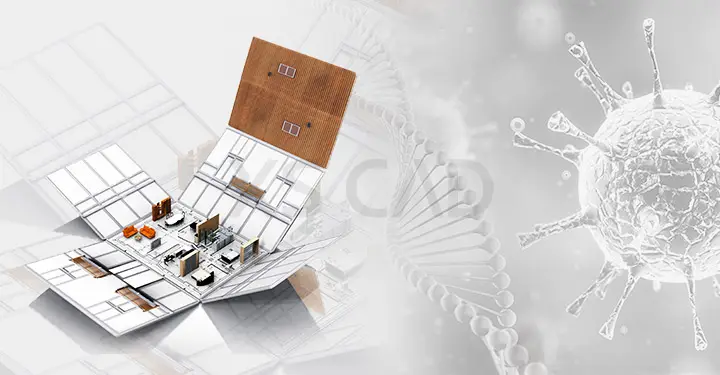Our Articles

How Will Covid-19 Impact Prefabrication?
In so many ways, 2020 is poised to become a watershed year for global change. The Coronavirus pandemic has affected and will affect a range of industries, generations of people and the environment, but not always negatively. Similar to the positive effect of national lockdowns on improving the physical environment, it may be possible that the Covid-19 situation will generate greater popularity for the process of prefabrication in construction. Firms could find attractive benefits in using offshore building services design consultants to help develop high-quality MEP drawings, MEP prefabricated models and building services coordination required for prefabrication.
Why would the process of prefabrication be an attractive option for construction firms?
Using prefabricated materials can reduce overall project costs, improve job-site productivity and help complete projects on time or even faster, especially during emergencies. For example, hospitals and healthcare units for coronavirus patients, other patients and frontline workers were deployed within days using prefabrication.
Some of the reasons to consider using prefabrication in the post-Coronavirus environment are as follows:
Return to Work Quickly
Contractors are keen to finish pending projects and hit the ground running on new projects. Prefabrication enables them to do so.
Prefabricated Wiring Benefits
Reducing the Chances of Disease Transmission
By reducing the number of interfaces and task dependencies between trades on site, there are reduced chances of disease transmission.
More Efficient Timelines
Profitability is driven by completing projects on time while ensuring quality. Using prefabrication can save time ordering materials and building panels and cables, as panels are delivered pre-wired and only need branch connections.
Measure Repeatedly, Cut Once
Improved Organisation
Maintain Social Distancing
Social distancing is as important as profitability in labour considerations. On-site workers often labour with poor ventilation and in cramped spaces. Reducing labour on site leads to reduced labour interaction, enabling social distancing norms.
Improved Safety
Prefabrication improves the physical safety of workers.
Specifically to deal with the challenges thrown up by Covid-19, here are some examples of how prefabrication work contributes to hospitals and healthcare:
Facilities for assessment, screening and outpatient testing of Covid-19 can also benefit from using prefabrication. Modular construction is built in the factory for hospital requirements and carefully created to meet the space and budget constraints of health authorities. As individual modules and units are delivered ready to install, there is minimum disruption to the daily work of medical staff and patient comfort. Using prefabrication also helps ensure the safety, security and needs of patients, doctors, nurses, care workers and other medical staff. Prefabricated units can be installed with a variety of sensors so that:
In a Dutch university medical centre, challenges presented by the Coronavirus encouraged the use of modules with:
Moving ahead, either in the shadow of the pandemic or having left it behind, the IoT (Internet of Things) and AI (artificial intelligence) may supply additional data for further benefits. It is conceivable that smart modular buildings will be able to integrate IoT devices by themselves, generate data and use it to help Covid-19 survivors who are aged and unable to care easily for themselves. Care homes may offer the elderly easy, secure connections with friends, family and medical staff. Battery-free sensors and IoT technology could help prevent incidents such as unattended stoves being left on, overflowing baths and people becoming confused about their whereabouts.
Today’s Covid-dictated economy poses many challenges. Prefabrication wiring assemblies and modules offer a certain sense of liberty to contractors so that they can manage labour, materials, manufacture, assembly and installation efficiently within the constraints of the Coronavirus pandemic. Construction sites can be safer, more organised and efficient when prefabrication work is handled offsite. Employing less labour, saving overall costs and completing projects on time are some of the factors that make prefabrication an increasingly preferred option during the time of Corona. Offshore building services design consultants and shop drawings service providers can offer a range of services, such as providing residential design drawings and building services coordination, at competitive rates while maintaining high quality. This could signal an increase in the long-term popularity of prefabrication as a result of the Covid-19 pandemic.
XS CAD has valuable experience providing DfMA modelling and drawings and prefabrication services for structural engineers, MEP engineers, general contractors, homebuilders, architects and retailers. Our range of services for structural, architectural and building engineering firms, such as consultants and contractors across the world, include modular construction models, prefabricated construction drawings, residential drafting services, architectural design services and shop drawing services for prefabricated bathroom modules and other units. We create these models and drawings by using Revit, AutoCAD, Inventor and BIM 360 Design for cloud collaboration.

